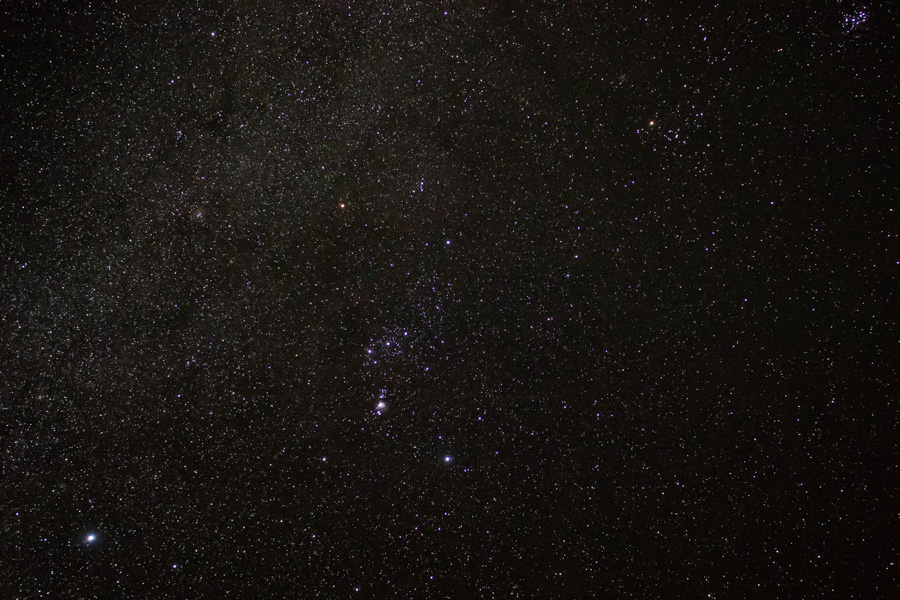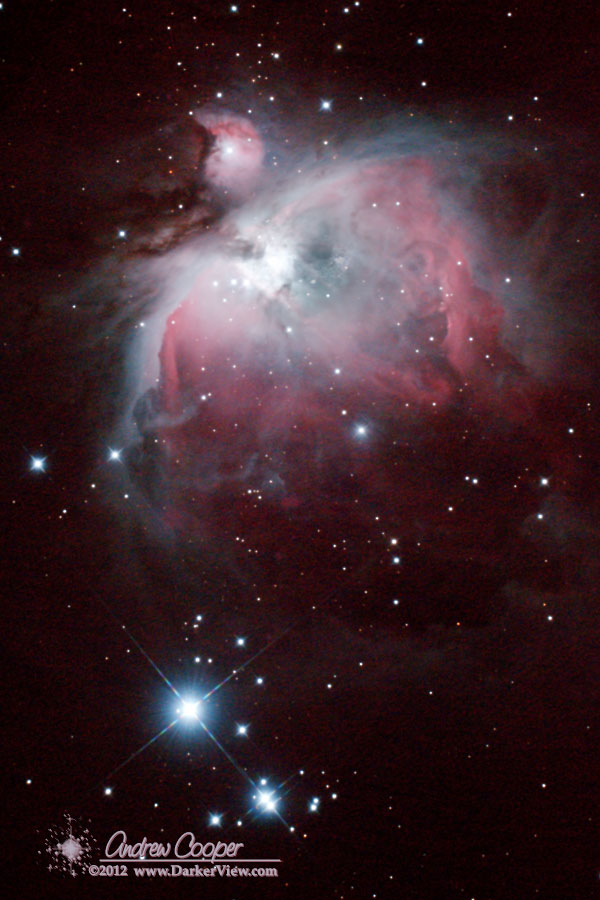
Orion and Meteor

When you want to see the stars, find someplace dark


Something is definitely not right with Orion. For anyone familiar with the sky the constellation just looks wrong with Betelgeuse at half its normal brilliance.
We have long known Betelgeuse is a dying star, in the last stages of its life. Old stars tend to be unstable, changing in brightness. Betelgeuse has always varied a bit, but this is the largest change on record.

It is odd to see such an iconic star change so dramatically, a reminder that not even the stars are permanent.

The photo tends to flatten the magnitude of stars, the difference is not as obvious. You need to step outside and look for yourself. Orion currently rises late in the evening.
The Great Nebula of Orion is a beautiful object, the brightest nebulae in the sky. It is also quite easy to photograph, making it somewhat of a standard target. I, like many astrophotographers, use the nebula as something of calibration target to check new equipment and processes.
This shot was taken with a Canon 6D and a TV-76mm telescope, a combination I want to work with this summer. I also changed up my processing flow a bit, re-ordering the steps, to achieve better calibration. The result is a more neutral color tone in the original, I can then saturate the image to taste for display or printing. Th original might be a bit closer to true color. Of course, “true color” is a bit of an illusion in astrophotography, where everything is relative.

The first astrophoto taken with the EOS-M. Considering the trouble it is to manually trigger the exposures without proper camera control, I am surprised I stuck it out to take 40+ subs. Since 30 seconds was the longest I could program the camera for I simply maxed out the ISO and took a lot of subs plus a dozen darks. There is still way too much noise in the resulting frame. Still, the ISO 12,800 frames are not all that bad, better than I expected. If this camera had remote control it would be a decent little astro camera. Longer subs and a lower ISO would deliver decent results.

A telescope needs to move smoothly, without any binding or sticking. The elegantly simple bearing design used in dobsonian telescopes uses a smooth surface riding on a small pad of some low friction material. This requires a pad of some material that slides smoothly and does not stick, to provide the motion. The standard answer of telescope builders is polytetrafluoroethylene, simply referred to by the acronym PTFE or the trade name Teflon.

The price is excellent for an 8-inch telescope, but there is some sign of cost cutting in the more recent versions. One interesting difference I found in this ‘scope was the bearing material. The bearing pads that are supplied do not appear to be PTFE, but instead a much harder material, possibly HDPE instead, which would be cheaper than PTFE. replacing these with PTFE results in a nice improvement in the smoothness and ease of movement of the telescope.
This particular telescope was missing two bearing pads, so some replacement was required, whatever the material. Without access to the original parts it was necessary to obtain whatever material was available, and that would be PTFE. Since it came in a different thickness than the original bearing it was also necessary to replace all four pads.

In place of the original staples, a small flat head screw is used to secure the Teflon in place. The soft material is easy to work. As long as the tools are sharp drilling and countersinking the pieces is easy. Best use a new drill bit if you have one, or grab one of the odd sizes that never seem to be used.
Position of the bearing around the radius of the trunnion have some impact into how easily the telescope will move. Positioned closer together and closer to the bottom of the bearing and the telescope will move more easily. Positions further part and higher on the bearing sides will result in more friction as the trunnion presses outwards against the pads.
The repair worked quite nicely, with a ‘scope that move smoothly across the sky. A bit more cleaning and a few minutes collimating the optics had the small telescope again ready for the sky.